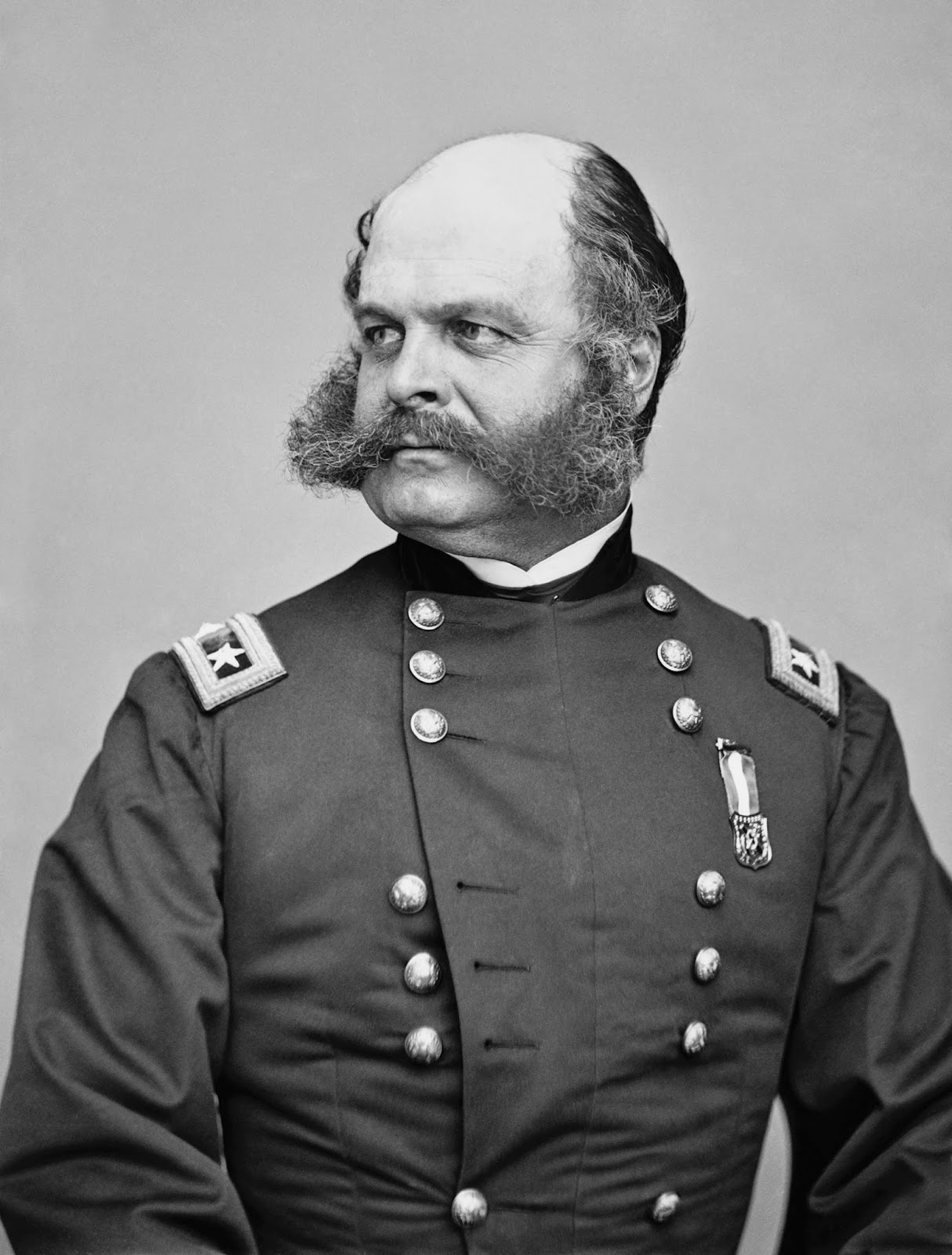
Ambrose Everett Burnside was born on May 23, 1824, in Liberty, Indiana. His father was a court clerk and farmer. He spent his youthful days as a tailor before he secured an appointment to the United States military academy West Point in 1843 through the influence of his father.
While studying, he lacked the toughness of the military required and faced heavy sanctions which nearly saw to his dismissal from the academy after amassing several shortcomings. Notwithstanding, he managed to finish 18th out of 38 in the class of 1847 and was made a brevet second lieutenant in the 2nd U.S. Artillery.
He then journeyed to Veracruz for the ongoing Mexican–American War, by the time he arrived, the combat had come to an end so he carried out mostly defensive duties around Mexico City.
Popularly called Burnside as a result of the facial hair patches at the side of his face which increased the hairline to behind his ears and attached to a clean-shaven chin.
For some reason, it was said that history had been over cruel towards him, as his contributions were the major brain work in achieving the early conquests for the Union on the Atlantic coast. He was a great administrator and had a sufficient strategic sense.
As the war drew to an end, Lt. Burnside served two years on the western frontier under Captain Braxton Bragg in the 3rd U.S. Artillery, a light artillery unit that had been transformed to cavalry duty, in charge of protecting the Western mail routes through Nevada to California. During a battle engagement at Apaches in Las Vegas, New Mexico. He was wounded by an arrow which hit his neck during the encounter in August 1849. After Which he was promoted to 1st lieutenant on December 12, 1851.
Burnside was posted to Fort Adams, Newport, Rhode Island in 1852. Here he married Mary Richmond Bishop of Providence, Rhode Island, on April 27 of that year and in October 1853, Burnside gave up his position in the United States Army and was elected commander of the Rhode Island state militia with the rank of major general. This position he held for two years.
Burnside experienced battle for the first time during the Civil War at the First Battle of Bull Run in July 1861. He went on to lead an advancing force in North Carolina and then served during the Maryland Campaign at the Battle of Antietam.
Initially, Burnside was unwilling to accept the post after he was placed in charge of the union army of Potomac in November 1862 and was withdrawn from the command in January 1863 after the shameful defeat at the battle of Fredericksburg.
Burnside held a departmental command in Ohio next where he joined in the defence of Knoxville in the fall of 1863. He went on to resign from duty after his units were defeated during the Battle of the Crater in July 1864. As the Civil War came to an end, Burnside worked as a railroad director and later served as a U.S. senator and governor of Rhode Island. He died in 1881 at the age of 57.
